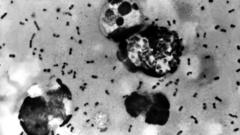Coconino County Health and Human Services confirmed on Friday that an Arizona resident has died from pneumonic plague, an ailment that has not claimed a life in the county since 2007. This unfortunate incident is reported to have stemmed from contact with a dead animal that was infected. Plague, often referred to as the "Black Death," historically wiped out a significant portion of Europe’s population during the 14th century but is now uncommon and effectively treatable with antibiotics.
According to the Centers for Disease Control and Prevention (CDC), there are about seven human cases of plague reported annually in the United States. Coconino County officials expressed condolences to the family of the deceased and are keeping them in their thoughts during this tragic time. Board of Supervisors Chair Patrice Horstman stated that out of respect for the grieving family, further details regarding the individual will not be disclosed.
Pneumonic plague is a serious lung infection resulting from the Yersinia pestis bacterium, which can occur following untreated cases of bubonic plague, the latter typically transmitted via flea bites. The onset of symptoms for bubonic plague can appear between two and eight days post-exposure, presenting with fever, chills, headaches, weakness, and swollen lymph nodes.
Plague is reportedly no longer present in the UK, with authorities emphasizing a very low chance of it affecting individuals returning to the country. Preventive measures include the application of DEET-based insect repellent to guard against flea bites, steering clear of contact with deceased animals and infected materials, as well as avoiding close proximity to symptomatic individuals, especially in areas where cases have been recently reported.



















